Some info about Stonehenge!
The impressive circle of gigantic erected stones Stonehenge is in the lowlands of southern England, about 120 kilometers from London. It is one of the most fascinating archaeological sites, but the less understood in the world.
Stonehenge is just one of many stone circles built in the Neolithic Britain over a period of more than a thousand years. However, this circle of megaliths (large stones) in particular has been fascinating specialists for hundreds of years, having been the object of many myths and superstitions. All those who visit the monument today are impressed by the gigantic erected stones, an effect that must have been much more overwhelming for the Neolithic people who built it 4,000 years ago.
Stonehenge was built between the end of the Neolithic period and the beginning of the Bronze Age, between 2950 and 1600 BC, and is certainly the best known example of the type of megalithic monuments that were being built throughout the Western Europe. At present it is formed by 90 great stones, although it seems that throughout the centuries some 50 stones have disappeared
The image that most people have of Stonehenge, that of a circle of erect stones that serve as the basis for other horizontal stones or lintels, is only part of a much larger and more complex monument. In the center there is a series of blue stones arranged forming a small horseshoe that surround the stone that served as an altar, the focal center of Stonehenge. Around the blue stones there is another horseshoe formed by five gigantic trilites, each consisting of two immense stone pillars with a similarly immense lintel above them.
The trilitos are surrounded by a circle of small blue stones erected, surrounded in turn by another circle. This outer circle was composed in the past by 30 large erected stones and the same number of lintels. Like the trilites, they were made of a stone called sarsen. Many of them are still standing. Around the perimeter of this central zone was a dirt embankment and a ditch.
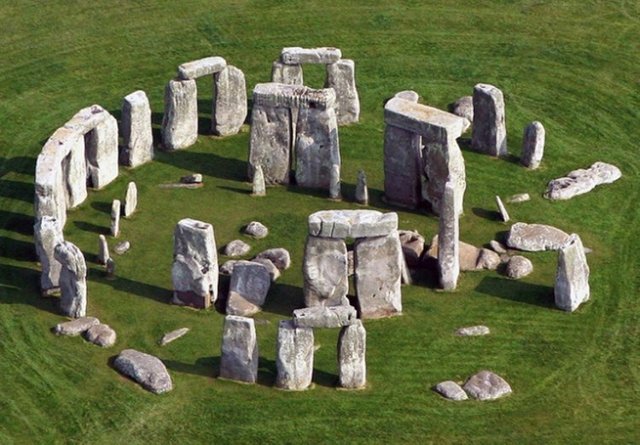

The Aubrey holes:
Just inside the embankment, the archaeologists found 56 holes excavated in the layer of limestone that lies just below the ground; holes that were filled immediately after being excavated, for reasons that no one really knows. These holes are known as Aubrey's holes. At four points, the ring of holes is interrupted by a raised blue stone called Station Stone. The main entrance to the area surrounded by the embankment is marked by a large stone called Heel Stone.
Many people do not realize that Stonehenge was built in several stages. First, around 2750 BC, the trench, the embankment and the holes of Aubrey excavated in the limestone were constructed. Over the following centuries Stonehenge remained in these simple forms. Then, around 2100 BC. The four Station Stones were erected in the middle of the holes of Aubrey and the Heel Stone. We now know that the blue stones come from a place some 200 kilometers away in the mountains of Wales, and that they were probably transported by water over rafts during much of that journey. It was not until about a century later when the gigantic trilites and the circle of sarsens that surrounded it were placed.
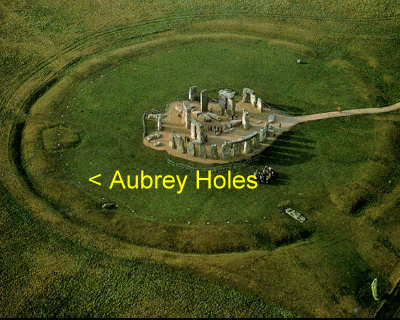

The Erection of the Stones:
Placing these large stones in place was a remarkable engineering achievement. First, the stones had to be brought from 30 kilometers away. No one knows for sure how it was done, but it looks like they could have been transported on rollers during the winter months, when the ground was hard. Another theory assumes that the stones may have been carried on sledges along specially constructed paths. Once in the right place, they had to be erected. This is likely to be achieved by raising them upright by means of a system of ramps, scaffolding and levers, and then fitting them into holes excavated ex profeso. The entire operation probably needed the strength of hundreds of ox and people.
The lintels were placed in their place by lifting one end of the stone and shoeing it with logs, then repeat the operation with the other end and as many times as necessary to reach the required height, when the stone was pushed on the pillars. The ancient builders left stone protrusions at the top of these pillars so that they fit into holes hollowed out at the bottom of the lintels to keep the stones in place.
Historians have estimated that it took about 1,000 people to lift the largest stones and that this third phase of Stonehenge's construction required two million hours of work in total.
The region surrounding Stonehenge has many monuments that remind people of their ancestors and chiefs. They buried their leaders under round mounds or barrows, often accompanied by gold and bronze objects. Bush Barrow, a mile south of Stonehenge, contained the skeleton of a tall person with two copper daggers, a bronze ax, and some gold ornaments.
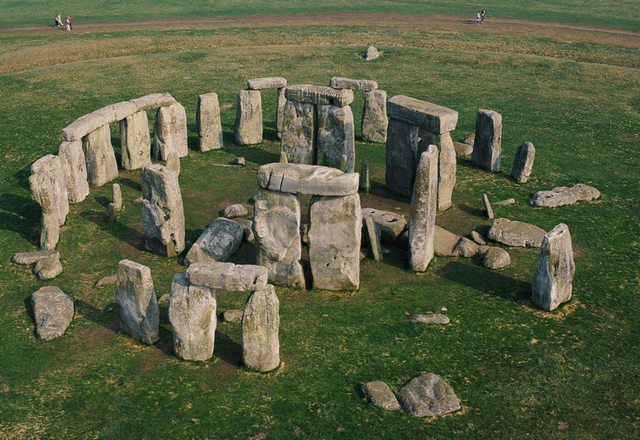

Other edifications in Great Britain:
Approximately 2.5 kilometers from the main entrance of Stonehenge is an embankment known as "The avenue", consisting of two parallel trenches separated from each other about 30 meters; the land that resulted from digging was placed between them to create a high road.
About 30 kilometers to the north is Avebury, where a trench delimits a huge enclosure 300 meters wide built just after 3000 BC. Inside Avebury, as in Stonehenge, there is a circle of sarsen stones, although they are arranged differently. Avebury is also much larger than Stonehenge.
Near Avebury lies the man-made mound called Silbury Hill, built roughly at the same time as Stonehenge. It is very probable that in the region there were many similar monuments, but they have been destroyed during the last 4,000 years. At that time, megalithic monuments were being built throughout Western Europe. Small stone circles are common in England, Wales and Scotland, perhaps as a continuation of an older tradition of building circles with pieces of wood nailed to the ground and have not survived.
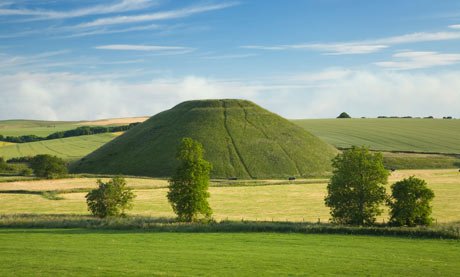

The Druids:
There is a misconception about Stonehenge, which has spread widely, claiming that it was built by Celtic priests, popularly known as druids and described by the Romans who arrived in Britain. This is nothing more than a romantic fantasy about the origins of Stonehenge, which began about 300 years ago and still persists today. Each year, at the summer solstice, modern druids and other people who believe that stones possess mystical or religious powers gather at Stonehenge to perform rituals on St. John's Day. Although these beliefs are not based on any archaeological evidence, the fact that they gather Stonehenge reflects the magical attraction that all those who see this spectacular monument feel.
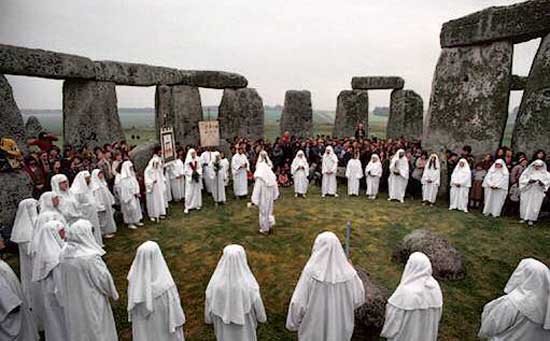
Buen post, sale reco +1
the first radar for aliens and direct tv
Hi. I am a volunteer bot for @resteembot that upvoted you.
Your post was chosen at random, as part of the advertisment campaign for @resteembot.
@resteembot is meant to help minnows get noticed by re-steeming their posts
To use the bot, one must follow it for at least 3 hours, and then make a transaction where the memo is the url of the post.
If you want to learn more - read the introduction post of @resteembot.
If you want help spread the word - read the advertisment program post.
Steem ON!
I love the fact that you're contributing to history popularization here on Steemit. Keep up the good work!